
| Years | Events | |||
|
16,000 - 8000 B.C.
|
Kodiak Archipelago covered with 3,000 feet of glacial ice | |||
|
6000 B.C.
|
|
Sea level stabilizes, creating Kodiak's modern coastline | ||
|
5500 B.C.
|
 |
|||
|
4000 B.C.
|
||||
|
3000 B.C.
|
||||
|
2000 B.C.
|
|
|||
|
500 B.C.
|
||||
|
1200
|
Earthquake | |||
|
1300
|
||||
|
1400-1600
|
|
Little Ice Age | ||
|
1550
|
Earthquake | |||
|
1741
|
Vitus Bering claims Alaska for Russia, first European description of archipelago | |||
|
1763-1764
|
Stephen Glotov, the first non-native to land on Kodiak, and crew of Adriana Natiliia winter at Alitak Bay |
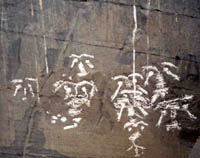 |
||
|
1776
|
Dmitrii Polutov on Archangel Mikhail attempts trade with Alutiiqs and is driven away | |||
|
1779-1780
|
Afansii Ocheredin on the Klimit winters at Kodiak and attemts trade | |||
|
1784
|
|
|
Gregorii Shelikof arrives, and Awa'uq (Refuge Rock) massacre | |
|
1785
|
||||
|
1786
|
Russians built fortified station at Afognak Village | |||
|
1787
|
||||
|
1788
|
Gregorii Shelikof petitions Empress Catherine II - Acquisition of Afognak | |||
|
1789
|
||||
|
1790
|
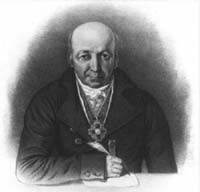
|
|||
|
1791
|
Baranof reaches Kodiak | |||
|
1792
|
||||
|
1793
|
Tsunami at Old Harbor; Kodiak city formed at Sun'aq | |||
|
1794
|
First Russian Orthodox missionaries arrive, lead by Archimandrite Iosaf Blotov | |||
|
1795
|
||||
|
1796
|
First Russian Orthodox Church built and consecrated in Kodiak. Father Herman starts school in Kodiak |
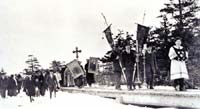 |
||
|
1797
|
||||
|
1798
|
||||
|
1799
|
||||
|
1800
|
||||
|
1801
|
||||
|
1802
|
||||
|
1803
|
||||
|
1804
|
Influenza epidemic | |||
|
1805
|
||||
|
1806
|
||||
|
1807
|
||||
|
1808
|
Baranov house built. Father Herman moves to Spruce Island. | |||
|
1809
|
||||
|
1810
|
||||
|
1811
|
||||
|
1812
|
||||
|
1813
|
||||
|
1814
|
||||
|
1815
|
||||
|
1816
|
||||
|
1817
|
Father Herman establishes school on Spruce Island |
 |
||
|
1818
|
Baranov is replaced as manager of Russian American Company by Russian Navy Captain Leonti Hagemesiter | |||
|
1819
|
Influenza epidemic | |||
|
1820
|
||||
|
1821
|
Shelikof formalizes work policy of Russian American Company, requiring half of Alutiiq men 18-50 to hunt | |||
|
1822
|
||||
|
1823
|
||||
|
1824
|
||||
|
1825
|
||||
|
1826
|
||||
|
1827
|
Influenza epidemic | |||
|
1828
|
||||
|
1829
|
||||
|
1830
|
||||
|
1831
|
||||
|
1832
|
||||
|
1833
|
||||
|
1834
|
||||
|
1835
|
Commercial whaling begins in Kodiak |
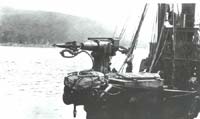 |
||
|
1836
|
||||
|
1837
|
Smallpox epidemic (population drops to 3,000 Alutiiq) reduction to 7 villages | |||
|
1838
|
||||
|
1839
|
||||
|
1840
|
||||
|
1841
|
Russians regulate sale of alcohol | |||
|
1842
|
||||
|
1843
|
||||
|
1844
|
||||
|
1845
|
Alcohol banned from being distributed to Alutiit | |||
|
1846
|
||||
|
1847
|
Il'via Tyzhnov translates Russian primer into Alutiiq for use by school children | |||
|
1848
|
||||
|
1849
|
||||
|
1850
|
||||
|
1851
|
||||
|
1852
|
Woody Island ice industry developed. Influenza epidemic | |||
|
1853
|
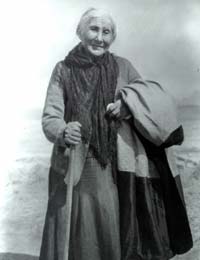 |
|||
|
1854
|
||||
|
1855
|
||||
|
1856
|
||||
|
1857
|
||||
|
1858
|
||||
|
1859
|
||||
|
1860
|
||||
|
1861
|
||||
|
1862
|
||||
|
1863
|
||||
|
1864
|
||||
|
1865
|
||||
|
1866
|
||||
|
1867
|
Alaska sold to the United States. Alaska Commerical Company assumes holdings of RAC. Treaty of Cession recognizes Natives' claim to land | |||
|
1868
|
||||
|
1869
|
||||
|
1870
|
||||
|
1871
|
||||
|
1872
|
||||
|
1873
|
||||
|
1874
|
||||
|
1875
|
||||
|
1876
|
||||
|
1877
|
||||
|
1878
|
||||
|
1879
|
||||
|
1880
|
||||
|
1881
|
||||
|
1882
|
||||
|
1883
|
||||
|
1884
|
||||
|
1885
|
||||
|
1886
|
United States Army detachment is sent to Kodiak to govern the island | |||
|
1887
|
||||
|
1888
|
||||
|
1889
|
First fishing regulations enacted. Influenza epidemic |
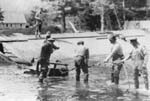 |
||
|
1890
|
First systematic census in Alaska. Total population 32,052. | |||
|
1891
|
Salmon hatchery is established at Karluk River | |||
|
1892
|
Afognak Island is declared a Forest and Fish Cultural Preserve and no fishing is allowed. Japanese begin dragging and canning King Crab from gulf coast waters | |||
|
1893
|
Baptist Mission and Orphanage are founded on Woody Island. Influenza epidemic | |||
|
1894
|
World's first fox farms established on Long Island | |||
|
1895
|
||||
|
1896
|
||||
|
1897
|
Sea otter population plummets and fur market collapses. Ranching and commercial whaling flourish |
 |
||
|
1898
|
||||
|
1899
|
||||
|
1900
|
||||
|
1901
|
||||
|
1902
|
||||
|
1903
|
||||
|
1904
|
Hannah Breece school teacher through 1906 | |||
|
1905
|
Afognak dedicates new Russian Orthodox Church | |||
|
1906
|
 |
|||
|
1907
|
||||
|
1908
|
||||
|
1909
|
||||
|
1910
|
||||
|
1911
|
Sea otter hunting is prohibited by international treaty. U.S. Government builds wireless station on Woody Island. Last Karluk River cannery closes. Commercial halibut and herring fisheries develop through 1930. | |||
|
1912
|
Mt. Nova Rupta erupts, spewing Katmai ash | |||
|
1913
|
||||
|
1914
|
World War I begins | |||
|
1915
|
||||
|
1916
|
||||
|
1917
|
U.S. enters World War I. Russian Czar and family executed. Aid from Russia for Russian Orthodox Chuches in Alaska ceases. | |||
|
1918
|
World flu pandemic | |||
|
1919
|
||||
|
1920
|
Fox farming becomes a major economic activity. Commercial razor clam harvests begin. U.S. women gain right to vote | |||
|
1921
|
Afognak students publish handwritten school annual - Kalega | |||
|
1922
|
||||
|
1923
|
||||
|
1924
|
Fourteen Sitka black tail deer are released on Long Island | |||
|
1925
|
||||
|
1926
|
||||
|
1927
|
Benny Benson wins design contest for Alaska Territorial flag | |||
|
1928
|
Eight Roosevelt elk calves are shipped to Kodiak from Port Angeles, Washington, and released on Afognak Island through 1929 | |||
|
1929
|
U.S. stock market crashes | |||
|
1930
|
Smithsonian anthropologist Ales Hrdlicka excavates at Larsen Bay and removes skeletal remains without permission through 1936 | |||
|
1931
|
||||
|
1932
|
||||
|
1933
|
||||
|
1934
|
Five hundred fifty-eight rabbits are captured along the railway in Anchorage and shipped to Kodiak for release. The transplant was successful |
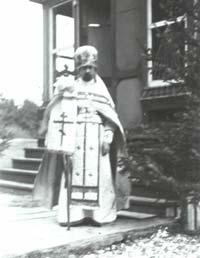 |
||
|
1935
|
Father Gerasim leaves Afognak to live on Spruce Island | |||
|
1936
|
||||
|
1937
|
Baptist Mission on Woody Island burns and is relocated to Kodiak. Whaling station at Port Hobron on Sitkalidak Island closes | |||
|
1938
|
Surgeon Dr. A. Holmes Johnson moves to Kodiak and begins practicing medicine from his home | |||
|
1939
|
Construction begins on Kodiak's Naval station. World War II begins | |||
|
1940
|
Kodiak incorporated as first class city. A five-mile road from town to the naval base is built | |||
|
1941
|
Pearl Harbor is bombed. US joins WWII. Population in Kodiak reaches 3,500. FAA builds communications station on Woody Island. Kodiak National Wildlife Refuge is established | |||
|
1942
|
Army operates a sawmill on Woody Island. Dec. 17 US Navy destroyer sinks Bob von Scheele's mailboat - Phyllis S. Dutch Harbor bombed. Aleutian Island campaign begins. |
 |
||
|
1943
|
||||
|
1944
|
||||
|
1945
|
Atomic bomb dropped and Japan surrenders in August. | |||
|
1946
|
||||
|
1947
|
Kodiak's Coast Guard base is established | |||
|
1948
|
||||
|
1949
|
||||
|
1950
|
Korean War begins | |||
|
1951
|
||||
|
1952
|
Mountain goats captured near Seward are released at Ugak Bay | |||
|
1953
|
||||
|
1954
|
||||
|
1955
|
Alaskans hold Constitutional Convention in Fairbanks | |||
|
1956
|
||||
|
1957
|
||||
|
1958
|
Alaska Statehood. Shrimp fishery developed | |||
|
1959
|
UW's Konyag-Aleut 5-year study of Kodiak's cultural and natural history starts. Jan 3 - official Alaskan Admission Day. Hawaiian Statehood |
 |
||
|
1960
|
Kodiak Bank of Alaska becomes a branch of National Bank of Alaska | |||
|
1961
|
||||
|
1962
|
||||
|
1963
|
JFK assasinated | |||
|
1964
|
9.1 Earthquake on March 27. Tsunami destroys Afognak, Old Harbor and Kaguyak and badly damages Kodiak city. |
 |
||
|
1965
|
||||
|
1966
|
KANA is founded to pursue land claims agreement. |
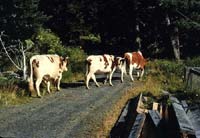 |
||
|
1967
|
||||
|
1968
|
||||
|
1969
|
||||
|
1970
|
Father Herman canonized in the Russian Orthodox Church as Saint Herman | |||
|
1971
|
Alaska Native Claims Settlement Act passed by Congress | |||
|
1972
|
Koniag Inc. is incorporated under ANCSA. Kodiak Naval station is decommissioned and turned over to US Coast Guard | |||
|
1973
|
St. Herman's Theological Seminary is founded | |||
|
1974
|
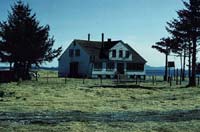 |
|||
|
1975
|
||||
|
1976
|
||||
|
1977
|
||||
|
1978
|
Village schools are built, as mandated by state law | |||
|
1979
|
||||
|
1980
|
King Crab industry flourishes with over 20.4 million pounds harvested | |||
|
1981
|
||||
|
1982
|
||||
|
1983
|
Archaeologists begin intensive studies of Alutiiq heritage with KANA's support |
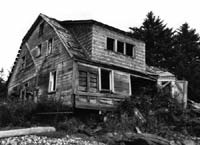 |
||
|
1984
|
King Crab fishery closed | |||
|
1985
|
||||
|
1986
|
||||
|
1987
|
||||
|
1988
|
||||
|
1989
|
Exxon Valdez runs aground in Prince William Sound, spilling approximately 11 million gallons of oil | |||
|
1990
|
KANA opens Alutiiq Cultural Center and repatriation of Alutiiq archaeological collections begins | |||
|
1991
|
Smithsonian Institute returns hundred of Alutiiq remains to Larsen Bay for reburial | |||
|
1992
|
||||
|
1993
|
KANA begins building the Alutiiq Museum with $1.5 million grant from EVOS Trustee Council. KEF founded | |||
|
1994
|
||||
|
1995
|
Alutiiq Museum opens to the public on March 13 | |||
|
1996
|
||||
|
1997
|
||||
|
1998
|
Native Village of Afognak Tribal Council formed | |||
|
1999
|
 |
|||
|
2000
|
||||
|
2001
|
||||
|
2002
|
Native Village of Afognak Constitution adopted | |||
|
2003
|
||||
|
2004
|
||||
|
2005
|
© Copyright 2018 Native Village of Afognak ~ all rights reserved